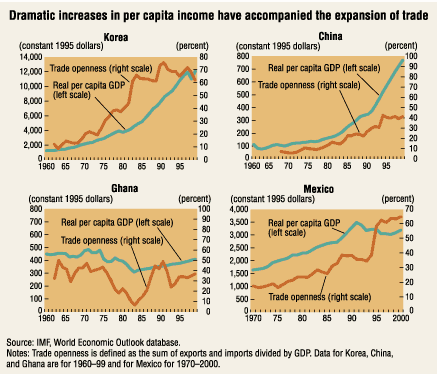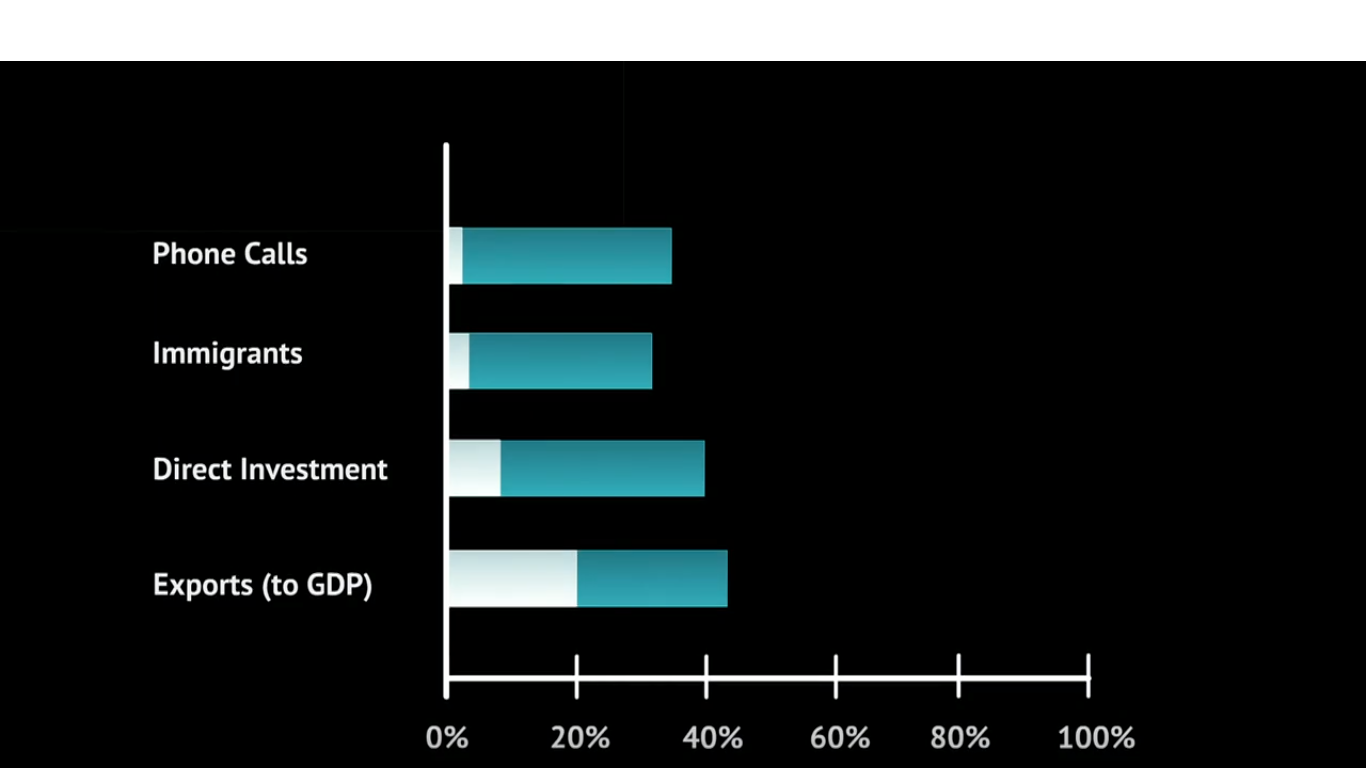Introduction:
Globalization refers to a worldwide phenomenon encapsulating the concepts of “increasing interaction between the people across the boundaries.” It refers to the cloud where values, ethics, trends and morals are diffused amongst people on an international scale. Moreover, (Levitt, T., 1993) has highlighted globalization a term stigmatized to the fusion and flow of trends in a global market. However, several organizations and business associations use this term to enhance and strengthen their market, but still they need to customize certain while dealing with the trade of products or services on an international platform. Trends of globalization include fashion industries, food industries, software houses, consultancy firms and much more.
With the advancement of technology since mid-17th, soon after the industrial revolution hit the Great Britain, world witnessed an optimistic progress in terms of communication and technological innovation. This subjected world into a new cloud of economic and social system, where societies amalgamated on a global platform, ultimately regulating economic activities and bringing financial soundness to the world. Globalization began with the increase in trade across the boundaries. In the later part of 19th century, Adam Smith with a group of development economists visited Great Britain and advised its’ industrialists to promote cross-boundary trade, in order to maximize profits.
This introduced the very first economic school of thought to the world of trade known as ‘capitalism’. This laid down the basis of cross-boundary trade, which gradually introduced the diffusion of cultural norms, values, trends, systems and mechanisms between different regions across the globe. The concept was later on named as globalization, which in actual is the economic system that has immensely increased the interaction of a large number of people and organizations on a worldwide scale for trade purposes, ultimately enabling them to broadly accept each other’s mechanisms and cultural thoughts since a decade. International Monetary Fund commonly known as IMF has classified four core dimensions of globalization back in 2000. These dimensions include: “trade and transactions”, “capital and investment”, “migration” and “circulation of knowledge”. These dimensions are explained below:
- Trade and Transactions: Before explaining the whole terminology, it is better to unwind the two terms in isolation. ‘Trade’ in simpler words refers to the import and export of a country while transactions refer to the sale and purchase of any good, commodity or service. When combined the term ‘trade and transactions’ refer to the all economic activities of a particular region. However, it promotes the flow of different cultures through trade between different regions, therefore globalization is promoted.
- Capital and Investment: Capital refers to the available resources of a particular country while investment refers to the optimal allocation of the available money in order to maximize profits. However, investment of capital for the sake of incredible profits is done both within and across the boundaries, ultimately promoting the paradigm of globalization.
- Migration: Migration refers to the flow of people from one region to another. When people move from one place to another; values, trends and norms also move along with them. These trends are then adapted by the people of the other region through active interaction, therefore globalization is promoted.
- Circulation of Knowledge: With each passing moment world is progressing technologically, paving smoother pathways for communicating. With the introduction of modern communication techniques, knowledge is being circulated across the boundaries, ultimately promoting the diffusion of different cultures around the world. These cultural norms, values and mechanisms then amalgamate under the title of Globalization.
Globalization and expansion of trade are highlighted to be interrelated with one another by (Sassen, S., 1999), where globalization is considered as an expansionary component for the trade, while at the same time expansion of trade is known for promoting globalization. Statistics on left reflect the expansion of trade with the passage of time (this means that globalization has promoted trade worldwide). 
Authentic Critics to the Concept of “Globalization”:
Several analysts have presented their views in the favor of stance that world and its people are globalized, but several critiques to this viewpoint with solid arguments also exist, Pankaj Ghemawat view on globalization prevails. Pankaj Ghemawat is an Indian-American economist and global strategies. He is amongst those very few economists who have largely contributed to the concepts of anti-globalization. In his ted talk of 2012 titled, “Actually the world isn’t flat”, he has introduced a new paradigm to the concept of globalization, where he placed up his strong stance based upon authentic statistics. He began the talk by highlighting the fact that in order to obtain clear picture of the concept of globalization, we all should know how much globalized we are and how much we aren’t; accuracy is quite important while making such assessments. He placed emphasis on the reality that majority books, researches, thesis and arguments are pro-globalization, while no accurate statistics are available to prove the fact. Instead of highlighting the world as globalized, he argues that the world is semi-globalized, while at the same time he mentioned that the a large number of population believes that the world is no more recognized through boundaries and we all live in a flat world.
Several analysis have been presented by the globalizers and anti-globalizers, but Pankaj Ghemawat while mentioning himself as an amateur historian quoted one of the best sayings by David Livingstone in 1850s where he mentioned that the real world, steam engine and telegraph have integrated East Africa with rest of the world. In order to explain his arguments he made cross- boundary survey in 2010, where the data points were: international phone calls, immigrants, direct investment and GDP (exports based). Results of the survey depicted that 2% of the phone calls were made internationally in the year 2010, now when it came to the proportion of people flowing to other countries rather than their homeland the ratio came out to be 3% (quite less than the expected), direct investment ratio in survey was calculated to be 10%; considerably higher than that of the other two indicators while GDP (exports based) came out to be 30% while later on by eradicating the biasness in official statistics it turned to be 20%. These results are considerably very low than the expected ones. A survey with similar data points was taken from the ordinary people to compare these results. The results of this survey declared that population across world expected the overall proportion of these data points to be approximately 90 %. Following graph depicts the comparative analysis of the two surveys conducted by Pankaj Ghemawat:
Blue bars in graph depict the expectations of the people while the white ones are the official statistics of all four data points. As per the graph the official statistics are far less than that of the expected ones. Pankaj Ghemawat termed this wide range of difference as, ‘Globaloney’. He published his data in the magazine ‘foreign policy’, where he had to face several criticisms such as, ‘the man himself has no idea what’s going on the current world’. During his ted talk he challenged the audience in the surroundings to come up with strong statistical evidences based upon surveys in order to defend either side of the debate. He furthermore, mentioned ‘exaggeration’ as another reason for the hype of globalization, as people of today’s world believe that technology will over empower us. His challenge was several times defended by his students as well as colleagues by pitching the idea of ‘facebook’, which is considered as the most common tool of globalization. Therefore, in order to explore if it was true or not, he again made a research which explored that on 10-15% of people around the globe have friends in abroad, the figure is not less but in actual is far lesser than the expected proportion of 95%. He ended up his talk by highlighting that radical openness is good given how open we are, considering this will surely make things better.
Ted talk by Pankaj Ghemawat has not completely changed my view regarding globalization, but it has provoked me to ponder upon other possibilities such as, ‘what if the world isn’t really flat.’ I have been taught by pro-globalist preachers, where none of them ever subjected me to a concept such as ‘cultural resistance.’ Therefore, the ted talk has motivated me to conduct a survey in order to explore myself whether the World is completely globalized or semi-globalized. Realities such as cultural resistance exists, which highlight the fact that people are resistant towards a sudden change. Moreover, the statistical evidences provided by Pankaj Ghemavat in his ted talk are sufficient to convince one that the world isn’t flat and we are living in semi-global region, where trends are diffused from one place to another, but their adaptation is spectacular. ‘Globaloney’, in the above mentioned graph explores that technological exaggeration enforces people to believe that we are living in a world with no boundaries while the reality is quite different from this. Therefore, from the ted talk of Pankaj Ghemawat on ‘Actually, the world isn’t flat’ I am convinced by the fact that we are living in a semi-globalized world which is not actually flat, rather it is being forced to look flat.
Fears of globalization witnessed by me up till now include concerns such as, ‘people fear to lose their identity,’ ‘ cultural adaptation is spectacular for many, especially the ones who reside in rural areas,’ ‘many fail to accept world as a global institute’, ‘globalization is only exaggerated to promote profit maximization through trade,’ ‘globalization only benefits the ruling class’ etc. These concerns are genuine since, they depict the insecurities of ordinary class, but at the same times these fears subside the data points such as: international phone calls, immigrants, direct investment, GDP (exports based) and facebook. These insecurities or fear are less violent towards these data points, as the proportion of GDP is calculated to be 20% in the year 2010 that explores the reality that a significant number of population is promoting trade through globalization and vice versa.
However, while conducting a new survey to explore whether we are living in a semi-globalized world or not better data points such as ‘tourism’, ‘international conferences’ etc. can be included in the survey. These data points can explore how much change is adapted through visiting another country or how much values or trends are inoculated by tourists in a particular region. Similar is the case with the data point termed as ‘international conferences’. These conferences serve as large platform where people from different cultures across the globe portray their knowledge and researches, usually regarding their homelands. This introduces new concepts into the lives of people, therefore including this point can however, explore how much change is adapted by the people attending these conferences. This can add much more into the concern that whether fears and insecurities of people are less or more violent to the concept of globalization.
Heading towards the conclusion, I would like to highlight that globalization is a broad concept which encapsulates sub-concepts such as the diffusion of cultural norms and trends, but according to the official statistics presented by Pankaj Ghemawat in his ted talk conducted back in 2012, he has highlighted the fact that the concept is being exaggerated. We are globalized but not completely, instead we are living in a semi-globalized world which isn’t actually flat. He furthermore, challenged people to come up with concrete evidences and statistics in order to support either side of the argument. However, his strong official statistics in support of semi-globalized world has somehow provoked me to ponder upon other existing possibilities along with the concept of pro-globalization such a, ‘technology can never over empower us,’ or ‘ world still has boundaries’; which in actual is necessary to get a better vision regarding the present and the future world!!






